City megavoins
Poland. Warsaw. Old city. 1945 year
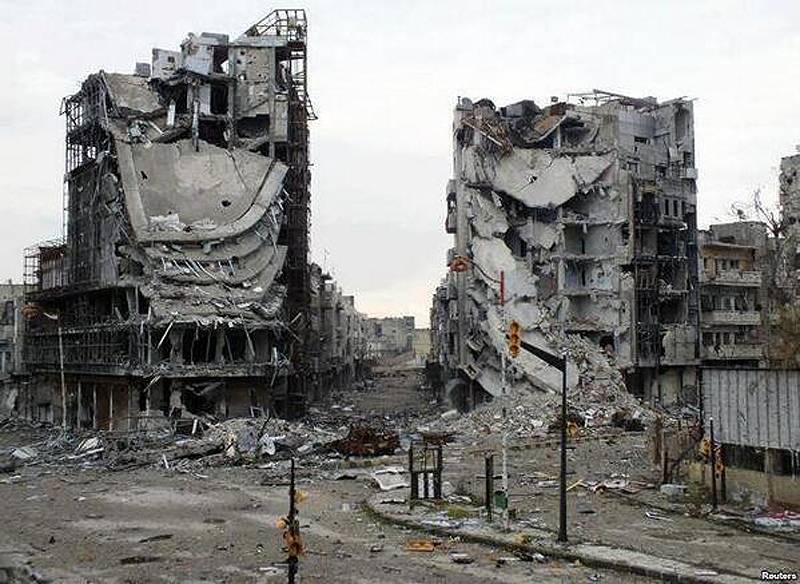
Syria. Holmes Centre. 2013 year
Nothing changes. People are still ready to cut each other's throats despite the sea of spilled blood ...
So, let's begin.
Part 1
It can be argued that the strategic importance of cities in conflict is not a new concept. Historically, cities served as protection for the population that lived inside its walls, while battles took place outside the city walls or on its ramparts.
After the attacking army successfully destroyed the city walls or the population surrendered after several years of hunger and disease caused by the siege, the enemy entered the city, took everything he wanted or needed, and then either destroyed this settlement or moved further into during their larger military campaign. Row historical battles contributed to the formation of the generally accepted opinion that military operations against cities are an integral part of a grand strategy. Notable examples include the fall of Constantinople, the capital of the Byzantine Empire, which was captured by the Ottoman Empire in May 1453; the one year (1854-1855) siege of Sevastopol during the Crimean War, when the allied forces of France, the Ottoman Empire, Sardinia and Great Britain captured and held this city; and in our time, the siege, first by units of the Yugoslav People's Army, and then by the Army of the Republika Srpska, the city of Sarajevo, the capital of Bosnia and Herzegovina, which lasted from April 1992 to February 1996 (see below).
Frederic Chamo and Colonel Pierre Santoni in his book “The Last Battlefield: Battle and Victory in the City”, published in 2016, wrote: “Cities were surrounded, fired, starved, then plundered and destroyed, but in most cases the city did not become a theater fighting. " Only on the eve of World War II, during the Spanish Civil War, which marched from 1936 to 1939, did the theater of operations move to the center of the country's capital. The heroic defense of Madrid lasted from 8 on November 1936 to 28 in March 1939, when Republican forces courageously fought off the attacks of the nationalists of General Francisco Franco.
Cities and Wars
General Franco believed that it would be possible to take Madrid in just a few days and thus send a powerful signal to his opponents and foreign allies (first of all Italy and Germany). His armies conducted their first attack on the Republican 29 stronghold of October 1936. However, much better prepared for hostilities in open spaces rather than on city streets, the nationalists for the next three years were more than once forced to retreat under the onslaught of Republicans, who used the geography of the capital to their advantage. In the end, Madrid fell in the 1939 year, but it happened rather as a result of a series of defeats for Republicans across the country, and not because of the clever tactics of the nationalists. Throughout the Civil War, this city remained symbolic: from 1936 to 1939, it served as an example of Republican resistance, while in 1939, it became a symbol of victory and the power of nationalists. “After the Spanish Civil War, the city became the main battlefield because it represented the center of power,” said Santoni in an interview. He not only co-authored the book The Last Battlefield, but also from 2012 to 2014, he was the commander of the CENZUB Training Center for practicing fighting in a city located in northeastern France (see the next section). During World War II, several decisive battles took place in the cities, including the defeat of the Nazis at Stalingrad in February of the 1943 year. After the siege of Budapest, which lasted from December 1944 to February 1945, the city was liberated by the Red Army and its Romanian allies from the German and Hungarian occupiers. Perhaps the most famous battle of the entire war was the battle for Berlin, which lasted from April 16 to May 2 1945, when the Red Army dealt a crushing blow to the Nazi regime.
If during the Second World War the cities mainly became a battlefield for warring countries, then after it a new trend appeared. After the end of this most bloody war in the history of mankind, in the 50-80 years a wave of civil wars and wars for independence swept through the world, which were the result of the collapse of the colonial empires of Belgium, France, the Netherlands, Portugal and Great Britain and a fierce struggle between East and West blocs for involving newly formed states in their sphere of influence. According to Santoni, “during these independence wars in Africa and Asia, the Western armies faced a new adversary who understood that knowing the city was a key advantage against an enemy with better capabilities.”
Today, the armed forces are increasingly taking part in hostilities in populated areas, such as this American military operation in the Iraqi city of Mosul in 2003
According to the authors of the book "The Last Battlefield", a vivid example of this trend was the battle for the city of Hue in central Vietnam from January to March 1968, which occurred during a blatant American intervention in this country from 1965 to 1975. In January 1968, the city, which was defended by the US Army and the Marine Corps and the South Vietnamese Army, fell under the onslaught of the Viet Cong rebels and the North Vietnamese army. This unexpected attack was carried out during a major Tet offensive launched on January 30 by the Viet Cong and the North Vietnamese army against the South Vietnamese army and the Americans. Within a few hours, the Viet Cong took all the key points in the city, government buildings and temples, and raised their flags on them. After only three months of bloody battles, the American army, marines and the army of South Vietnam returned this city to their control. With such difficulty, the victory that came was explained by two reasons. Firstly, initially the Americans and their Vietnamese allies did not want to destroy some of the buildings in which the Viet Cong soldiers were hiding, including Buddhist frames and the imperial palace. This allowed the Viet Cong to continue to supply their forces and hold their ground. Secondly, while the Viet Cong showed great determination and strong organizational ability, including organizing defensive perimeters around their zones, the Americans and South Vietnamese had problems coordinating their actions. The nature of the battle in the city required different battalions to act and attack from different directions, and this complicated the connection between them, so each battalion was forced, for the most part, to rely only on itself. The situation changed radically when the Americans and the Vietnamese regrouped and received support from heavy artillery and aviation, after that they were able to develop success, knocked out the enemy from the city and regained control over him.
The experience gained in the battle of Hue and other battles fought by the United States after World War II was reflected in the development of the “Urban Combat Operations (BDGT)”, issued for the US Army in 1979. The introduction to it says: "Combat operations in the city can be conducted in order to take advantage of a strategic or tactical advantage, which gives possession or control of a particular urban area, or prevent the enemy from taking advantage of this advantage." As the experience of battles for Madrid or the battles for Berlin, and as rightly pointed out in the Guide, shows, what is happening in the city "can provide decisive psychological benefits that often determine the success or failure of a larger conflict."
Cities and Soldiers
The end of the Cold War in 1991 marked a new turning point for the city in the context of hostilities. The countries that fought and gained independence in that era, thanks to the support of their American and Soviet allies, were suddenly left to themselves. They had weak political institutions and at the same time were forced to cope with economic problems caused, among other things, by the process of globalization. Thus, and this is well illustrated by the example of the conflict in the Balkans, cities have not only become a space where globalization has come into conflict with local expectations and needs; they also gradually became the main strongholds of that part of civil society that rejected and opposed the state apparatus, which did not meet these expectations and needs.
As a result, in 90, a wave of new wars broke out, where cities became theaters of bloody conflicts between civilians deprived of economic and / or political rights and the carriers of power opposed to it. It is therefore not surprising that the post-Cold War epoch witnessed military operations, often carried out in the form of Western intervention, the purpose of which was to end conflicts and impose conditions conducive to peace and post-conflict reconstruction. These new missions included a completely new set of complex tasks that needed to be addressed during military operations, including in large cities. The example of the Republic of Bosnia and Herzegovina, in particular the siege of its capital, Sarajevo, is further evidence of this.
Let us leave outside the scope of the article a detailed discussion of the factors behind the collapse of Yugoslavia at the end of 80-x-beginning of 90-s. Nonetheless, without mentioning in particular, the need of the ethnically heterogeneous population of Yugoslavia for broader autonomy, combined with the dissatisfaction of the government in Belgrade with some elements of the Yugoslav government, accelerated the gradual disintegration of the country. Part of this decay was the Bosnian war, which began in April 1992, in which the Republic of Bosnia and Herzegovina, Croatia and the Croatian Republic of Herceg-Bosna opposed the Republic of Serbian Krajina, the armed forces of Yugoslavia and the Republic of Serbian. The war that raged in Bosnia and Herzegovina until December 1995 may have become one of the most shameful pages of recent European history because of the return of mass graves, ethnic cleansing and concentration camps through 50 years after the end of World War II, which seemed to be forever to instill in Europeans a persistent aversion to such manifestations of misanthropy. She also remembered the siege by the troops of the Republika Srpska capital Sarajevo, which lasted three years and ended only in September 1995, when aerial bombardment by NATO aircraft, which began in August 1995, as part of Operation Thoughtful Force, seriously weakened the fighting capacity of the Bosnian Serbs.
During the three and a half years of the siege, one of the wide central avenues of Sarajevo, the Snake from Bosnia, received the nickname Alley of Snipers. Hills around the city and high-rise buildings along the street itself created favorable conditions for sniper fire. Arrows from the Bosnian Serb army, located on the roofs of buildings, regularly shot unsuspecting victims, not only civilians, but also UN peacekeepers deployed since 1992 in Croatia and Bosnia and Herzegovina. Among other tasks, UN peacekeepers were supposed to protect security zones organized to protect civilians, and Sarajevo was one of those zones.
According to Santoni, “Conflicts in cities last much longer than in open areas. Not only because the new rules of engagement dictate that the population should be protected at all costs, but also because the urban environment, with all its possibilities for conducting unexpected attacks, which it provides to “local fighters”, neutralizes the advantages of modern technology available Western armies. " They are also required to have a serious ability to balance between different situations or requirements. According to the book "The Last Battlefield," "units involved in urban combat should be able to own all the range of operations, from non-lethal operations to counter riots to fierce skirmishes with the rebels." The current military operations to liberate the city of Mosul from the Islamic State (IG, prohibited in the Russian Federation) with the participation of the Iraqi armed forces, allied militias, Kurdish forces and the international coalition under the command of the United States, received the general name Operation "QADIMUM YA NAYNAWA" ("We go to Nineveh ", referring to the governorate of Nineveh; the Iraqi province on the outskirts of Mosul), which began on October 16 on the 2016 of the year, fully confirms the above quote from the book.
During the siege of Sarajevo from 1992 to 1995, the street “Snake from Bosnia” got the nickname “Alley of snipers”, as the Bosnian Serb shooters shot at the people appearing on it, without parsing
Urban Combat Manuals
The United Nations Department of Economic and Social Affairs, in its revised edition of 2014, Perspectives on Global Urbanization, said: “The planet has gone through a process of rapid urbanization over the past 60 years ... In 2014, 54 percent of the world's population lived in cities. Urban growth is expected to continue, and by 2050, one-third of the population (34 percent) will live in rural areas and two-thirds in cities (66 percent). In the middle of the twentieth century, it was just the opposite; only a third of the population lived in cities, and the rest in rural areas. ” As the growth of cities, which are centers of struggle for economic, political and cultural influence, continues, they will remain a key determinant in every conflict that breaks out as a result of this struggle.
According to the military adviser at Tales, General Alain Buken, “There are currently four scenarios of military presence in the cities: support for national security forces, for example, the presence of French military 10000 on national territory since the IG committed political violence in Paris 2015 year; control of the urban zone, for example, the peacekeeping mission of the French army in southern Mali; external counterinsurgency operations, such as the UN operations in the Somali capital Mogadishu in 1993; and repulsing the city from the enemy, as happened recently with the Iraqi Mosul. ” By definition, NATO, these operations are called Fighting in Built-Up Areas (fighting in built-up areas). The report of this organization, “Urban Operations in 2020,” published in 2003, defines them as “military and other activities in the area of operation, whose defining characteristics are man-made structures, the corresponding urban infrastructure and civilians”. In the United States, these operations are known by the abbreviation MOUT (Military Operations in Urban Terrain - Fighting in Urban Territory or BDGT). The Military Operations in Urbanized Terrain doctrinal guidance document, published in May 2016, defines them as follows: “All military operations planned and carried out on topographically challenging terrain and adjacent territories dominated by man-made structures. BDGTs include fighting in cities, that is, fighting for every street and every house in large and small cities. ” For this publication, the term BDHT has been chosen as perhaps a broader concept.
Canyon battles
A key feature of the fighting in the urban area (BDGT) is that the urban relief, with all its difficulties, changed the balance of power, since now the victory does not necessarily belong to the belligerent with the most deadly and technologically advanced capabilities.
According to Colonel Santoni, superiority in the BDGT is, first of all, a question of owning or acquiring as much as possible a deeper understanding of urban space. In fact, a determined rebel group with excellent knowledge of urban space will be able to fight on an equal footing with soldiers who have the best capabilities, but have little control of the situation.
A study by consulting firm Roland Berger, published in 2015, states that over the past decade there has been a reduction in NATO personnel by a third. As Shamo and Santoni write in their book, “Western armies participating in the BDGT gradually come to understand the fact that not only modern technologies determine success. The number of privates and commanders and the quality of their training will also be a decisive factor in the BDGT. ” Consequently, appropriate combat training and careful strategic and tactical planning will undoubtedly help increase the chances of success in the BDHT.
Tunnel effect
One of the key characteristics of urban space is that it is very closed. Many streets, small lanes, intersections and tall buildings provide opponents with many opportunities for ambushes. This can seriously disorient a soldier who does not know the area very well, or one who is not ready for such enemy tactics. An essay published in 2012 in the History and Strategy French Store, entitled “Three Characteristics of Urban Operations,” explains: “The sense of isolation created by the presence of buildings limits the movement of units, directing them through the streets and other aisles, allowing the enemy defended, to a certain extent, to predict their movements. ”
In their book, Shamo and Santoni call this the “tunnel effect”, claiming that “the streets are being killed”. The “tunnel effect” has a particularly strong psychological effect on individual soldiers, who suddenly feel that at any moment they can become an easy target. The consequences associated with the fact that the soldier gets tired faster because of the stressful space should cause serious concern and be taken into account during training, as well as during operational and tactical preparation for the BDHT.
Finally, it often happens that very narrow streets do not allow maneuvering combat vehicles, and this makes it difficult for infantry to support these vehicles capable of providing additional protection. Indeed, the firepower, which, as a rule, these machines can provide, simplifies the neutralization of the enemy in the area surrounding the units. Without such support, the same units are unprotected from potential threats and surprise attacks. However, modern rules of engagement after the end of the Cold War require NATO to minimize indirect civilian casualties and damage to civilian infrastructure, which may also limit the use of military equipment during BDGT.
Cities are a complex space that includes various types of urban development. At the landfill of the French army CENZUB, Jeffrekur village has all the necessary infrastructure
Xnumd vision
BDGTs are further complicated by the three-dimensionality of urban space. Here it is important not only what individual soldiers can see in their field of vision, but also what is inside the buildings, on or under them. As Sarayev’s experience has shown, snipers can hide anywhere, from the window to the roof of a building. Similarly, an adversary may hide in numerous underground passages, such as the sewer system or the subway tunnel, which are part of the urban space.
The equipment that is currently available to the armies of many countries is not yet able to fully assist soldiers in the tasks of preparing for such difficult conditions. Maps that soldiers use during training and combat training are only two-dimensional. For example, they do not give any information regarding the height of the buildings surrounding the street that the unit intends to take, they do not give information about the possible presence of underground passages. However, underground passages are quickly becoming the primary means for those who know about their existence. The Doctrine of the Marine Corps "Guidelines for hostilities in urban areas" states: "Both, the attacker and the defender, can use underground passages to get to the rear and flank of the enemy. These passes also simplify ambushes, counterattacks, and penetration into the enemy’s rear. ” For example, during the battle for the German city of Aachen in October 1944, German troops regularly used underground passages, suddenly appearing behind American soldiers and without difficulty inflicting heavy losses on them. Such tunnels can also be used for the storage of ammunition, which makes it possible to gain another advantage over the opposing forces, which can experience considerable difficulties in supplying their units.
In the BDGT, the military incur more losses than in hostilities in open spaces, and therefore during combat training soldiers learn to evacuate the victims quickly and efficiently.
Risks except attacks
Unlike cities in the pre-industrial world, modern urban areas are a complex environment consisting of different zones. The city center, which is a common element of all urbanized territories, varies in its structure in accordance with the level of development and architectural history of each country, but it has one common feature for all - population density and traffic intensity. City streets in the center are predominantly commercial clusters filled with shops, restaurants and offices. Although again this varies from country to country, commercial clusters are usually built around wide streets in order to accommodate large groups of people and simplify the traffic of cars to deliver all sorts of things. Behind the center of the city are the main peripheral areas consisting of streets of various widths, furnished mainly with residential buildings. Beyond the main periphery, there are sprawling residential zones, often taking the form of vast, densely populated poor areas in developing countries, while in developed countries these zones may simply be new construction areas in which ever-growing populations live. Last but not least, industrial areas that are remote from the center, by and large, consist of a cluster of industrial buildings.
According to the aforementioned Marine Corps Manual, “Each of the areas of a settlement has distinctive characteristics that can seriously affect the planning of the BDT.” Densely populated areas, such as the city center, in general, are more likely to provoke a “tunnel effect” and at the same time significantly complicate the access of support platforms such as major combat Tanks and armored vehicles. Commercial clusters, old residential areas and new housing estates and slums (in developing countries) are more suitable for the passage of such cars and often represent ideal ways to approach the central areas of the city and gradually capture the urban area. Remote industrial areas, however, can be a big problem because they often have buildings with hazardous materials, such as gas or chemicals. As noted in the essay Three Features of Urban Operations, mentioned above, the risks these industrial areas bear are known in Western tactics under the acronym ROTA (Risks Other Than Attacks, Risks Excluding Attacks).
Продолжение следует ...
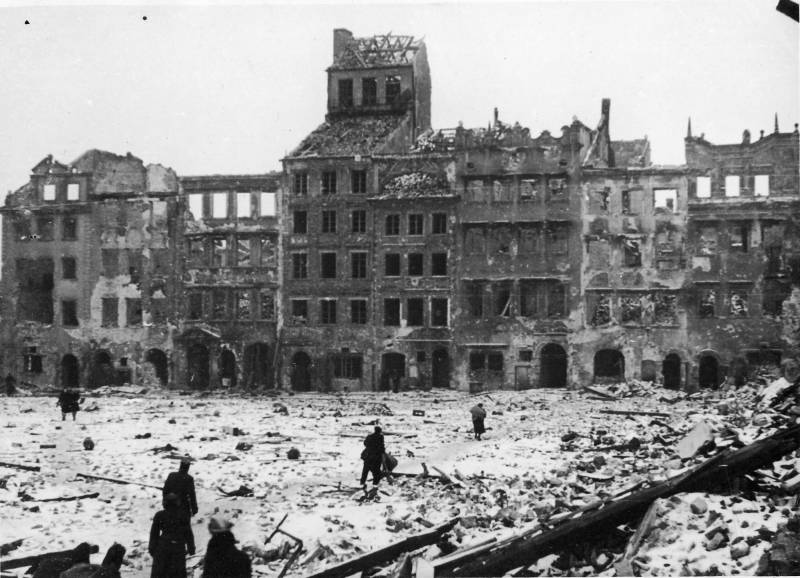
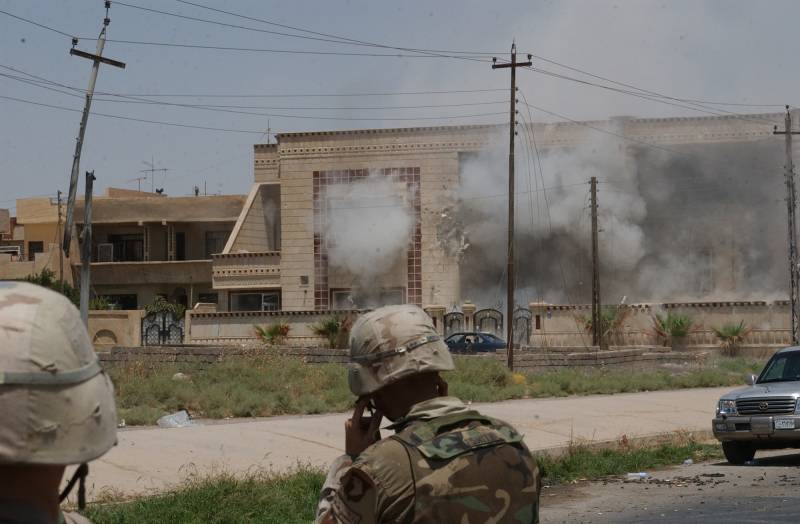
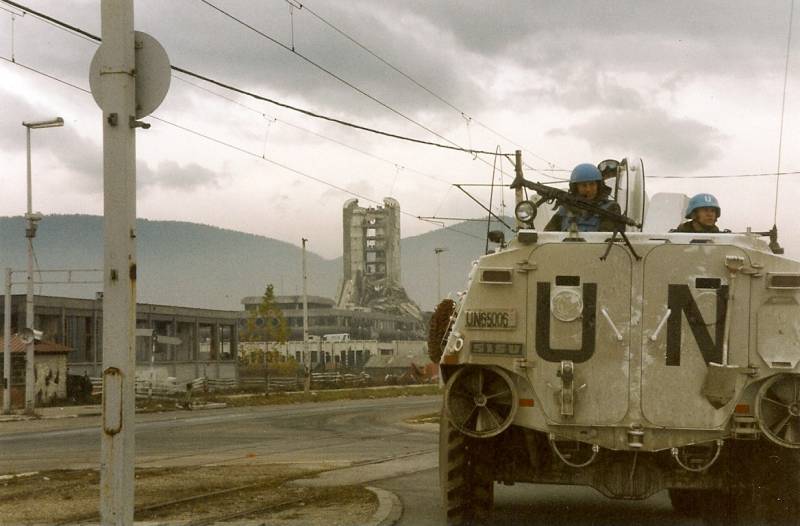
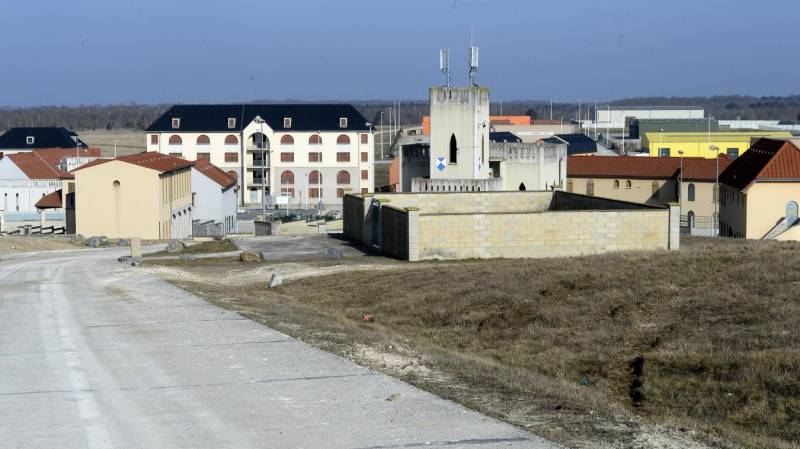
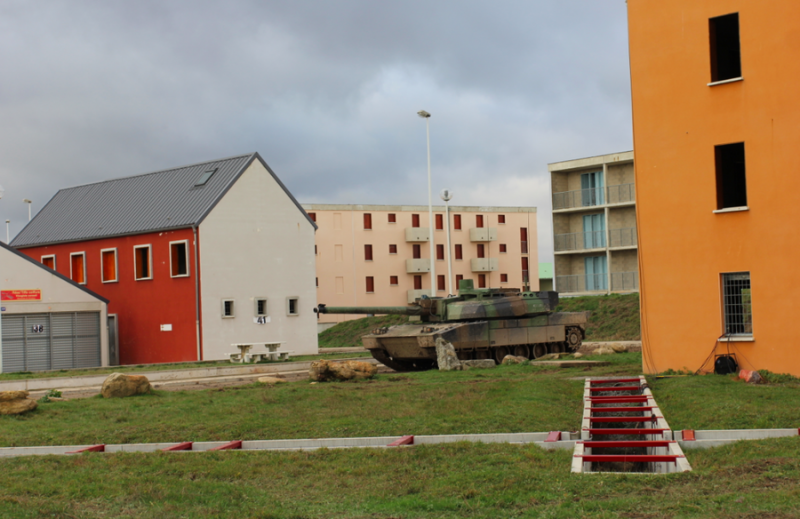
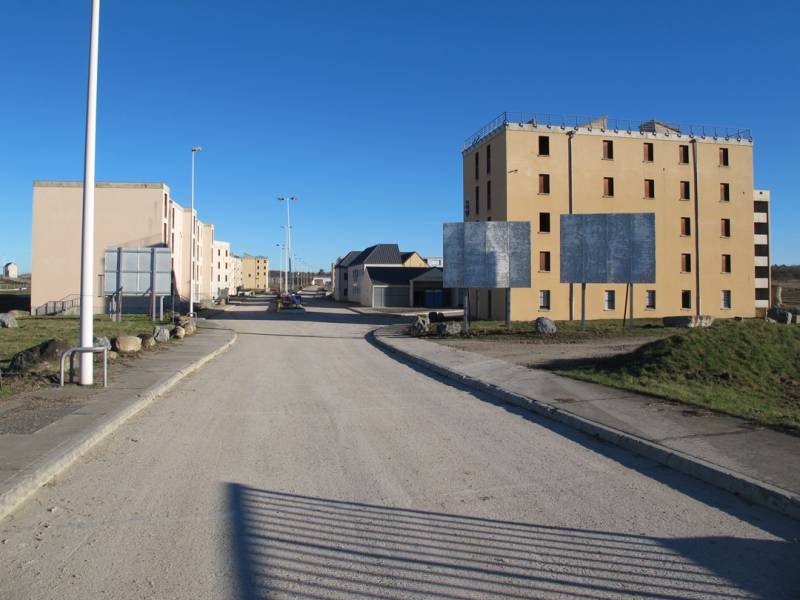
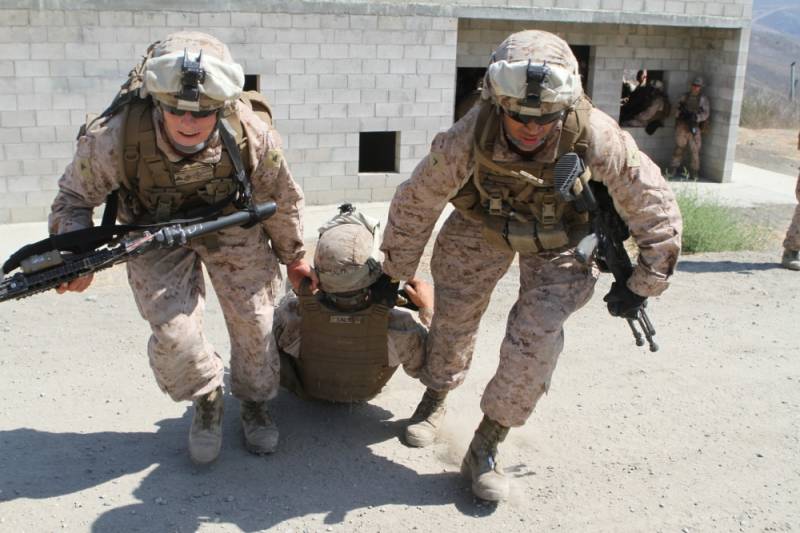
Information